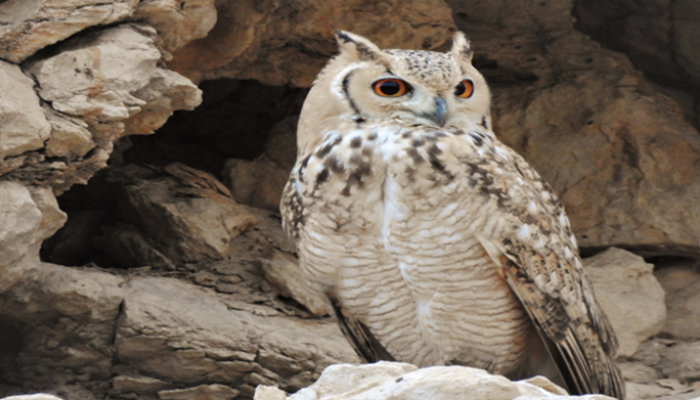
Muscat: Five endangered species of owls were recently spotted in Al Buraimi Governorate
Specialists in the governorate’s environmental management teams are continuously trying to protect wildlife, preserve biodiversity, document its various details, and enhance employee culture about endangered species. These efforts have translated into monitoring and documenting five species of owls in the governorate.
Mohammed bin Salim Al Balushi, an environmental systems specialist in the Environment Department in Al Buraimi Governorate, said that after an effort that lasted four years, he could monitor five rare species of owls in different places in the governorate.
Al Balushi explained that the species that were monitored in the governorate were the Bubo Ascalaphus, the short-eared owl, the barn owl, the little owl, and the barred tree owl, stressing that this monitoring process enabled him to know the characteristics that distinguish them, in addition to their way of living and the seasons of their existence.
Al Balushi pointed out that the Bubo Ascalaphus is widespread in North Africa and the Arabian Peninsula. Its size ranges from 50-70 centimetres, and its weight reaches 1-3 kilograms. Its wingspan reaches approximately two meters. The yellow-orange colour of its eyes distinguishes it besides the presence of two short tufts of feathers on its ears, and its face resembles that of a cat.
The deaf owl, or the short-eared owl, is found in many regions in the Northern Hemisphere. It is one of the birds that lives in open areas such as swamps. It often hunts during the day and nests on the ground.
Its medium size and golden colour distinguish the warehouse owl, dark spots distinguish the female, and her face resembles the shape of a heart in addition to black eyes. It lives in open, wooded areas and farm and city environments and builds its nests in large warehouses and the gaps of trees and old buildings.
Al Balushi explained that a round head and long legs characterise the little owl, and the female’s colour is grey, tending to brown. Its upper parts are characterised by the presence of white dots, in addition to its yellow eyes and light yellow beak, and its length ranges between 21-23 cm. The striped tree owl is 21 centimetres long, and its colour is sandy grey, while its colour tends to be grey from below, with sharply clear black lines.
Al Balushi confirmed that the reproduction process through hatching has been monitored for these species, except for the short-eared owl, which is unstable and considered a migratory bird. Pointing out that taking pictures of these different species in the governorate was not an easy matter, he said the process took four years in different places in the governorate, and the monitoring process contributes to informing community members, specialists and researchers about wildlife and the importance of preserving them, especially those that are threatened with extinction.
He pointed out that the next stage is to preserve and protect them and follow up on their whereabouts, explaining that not disclosing their whereabouts is one of the methods that contribute to preserving them and preventing them from being subjected to poaching.